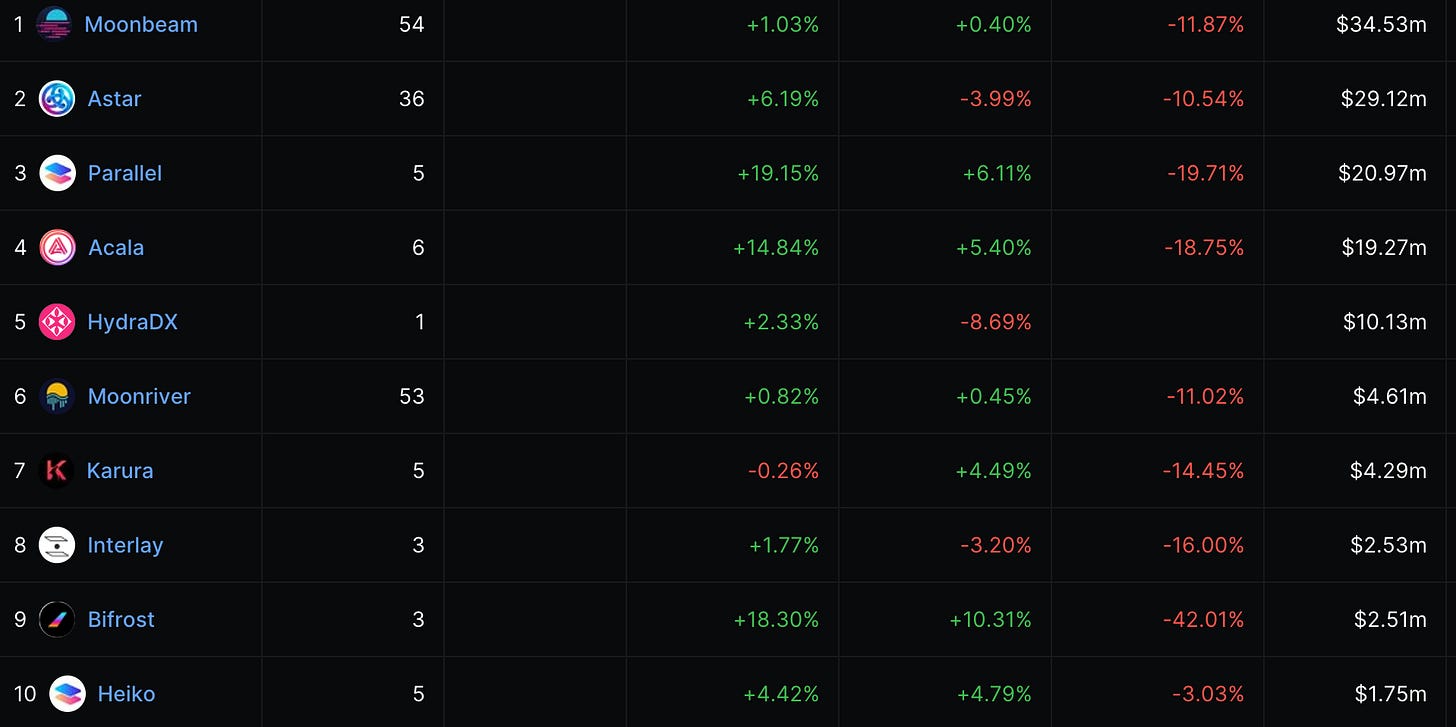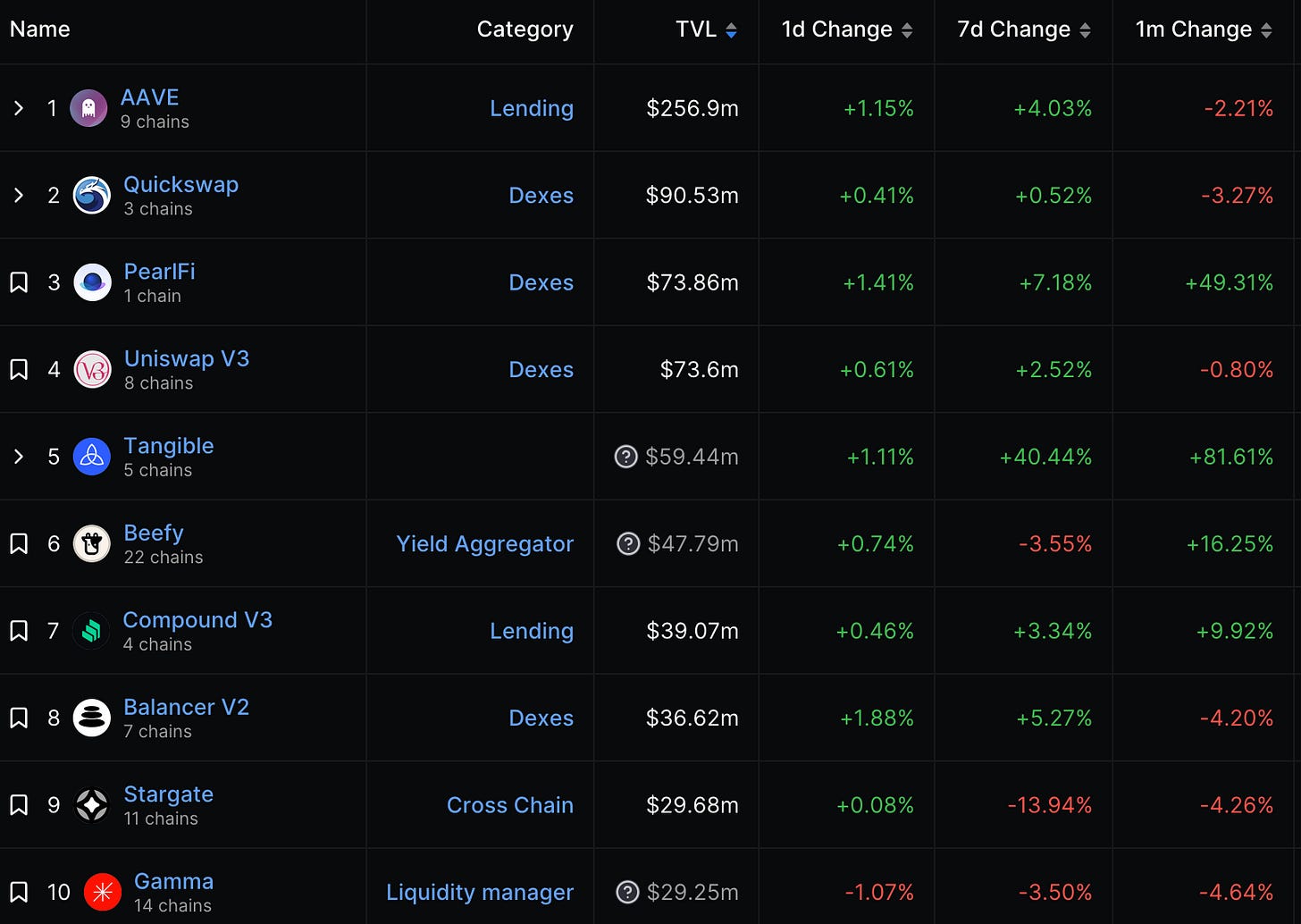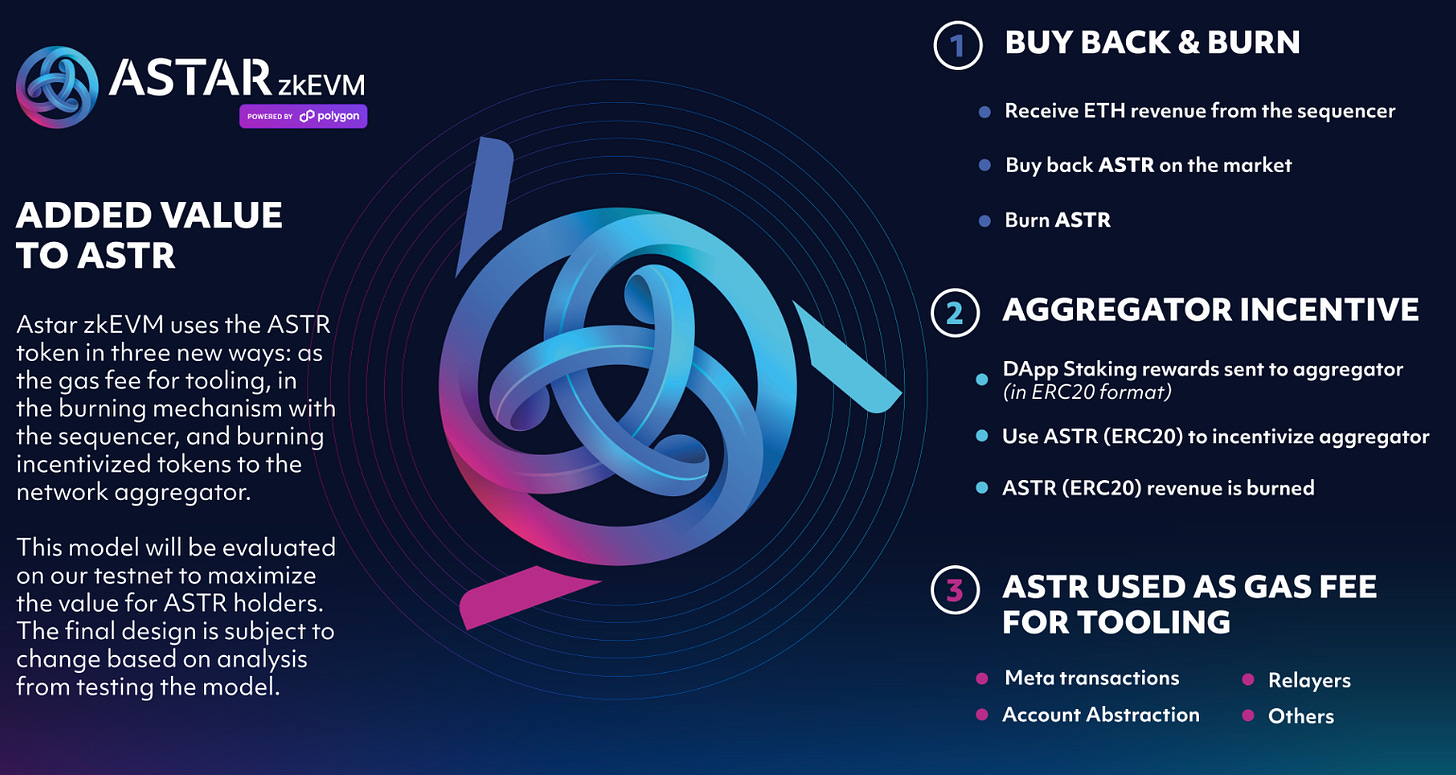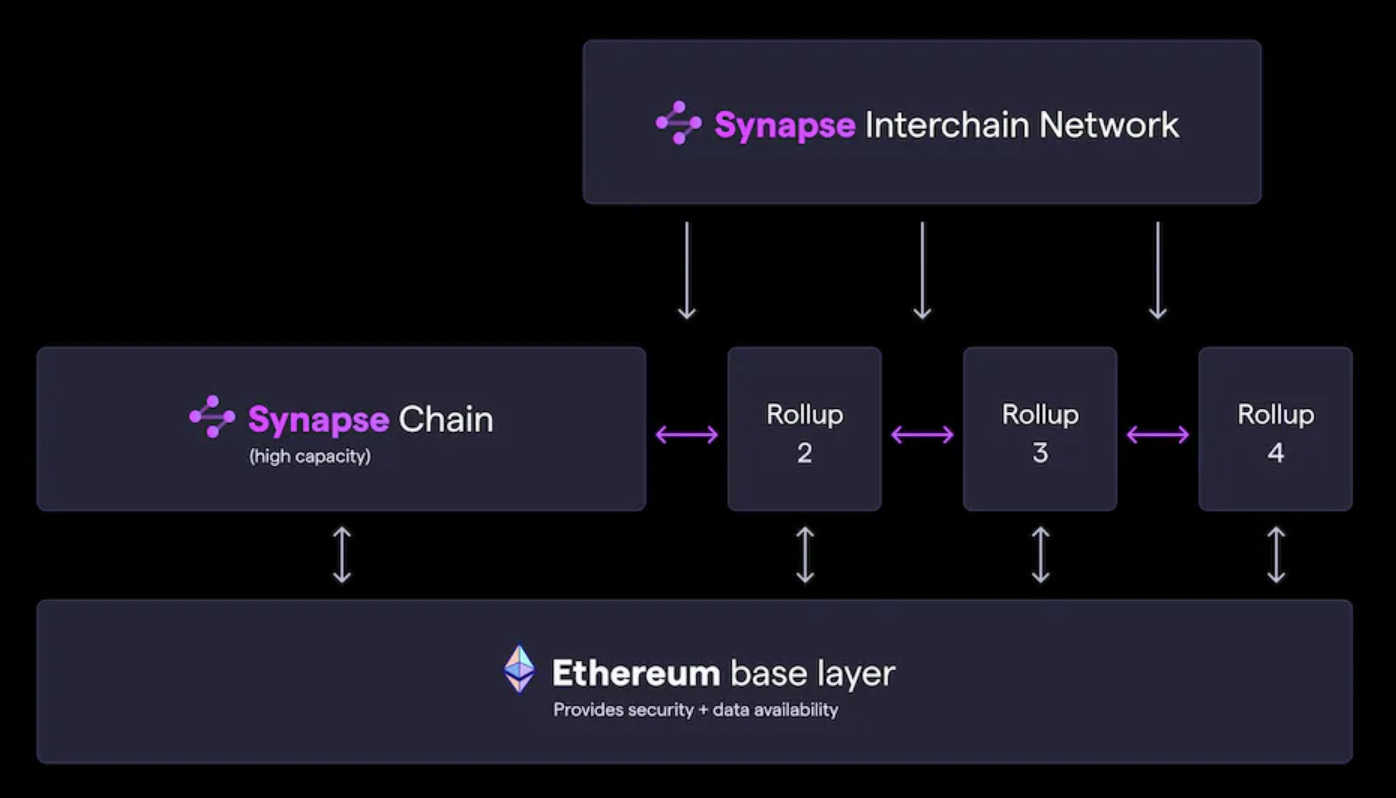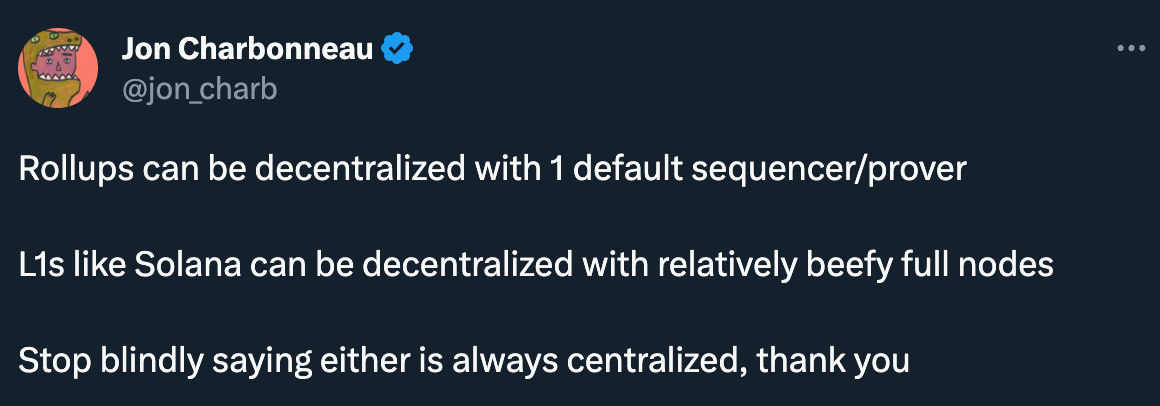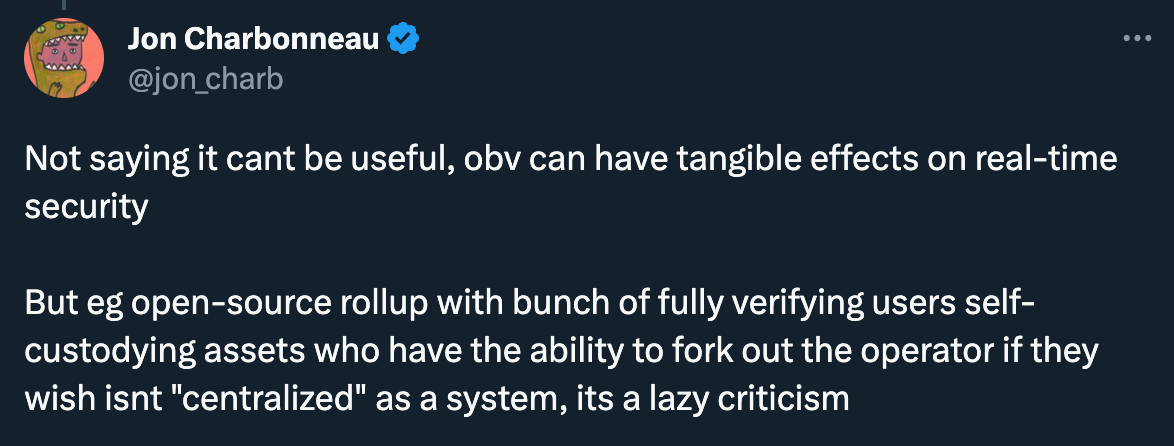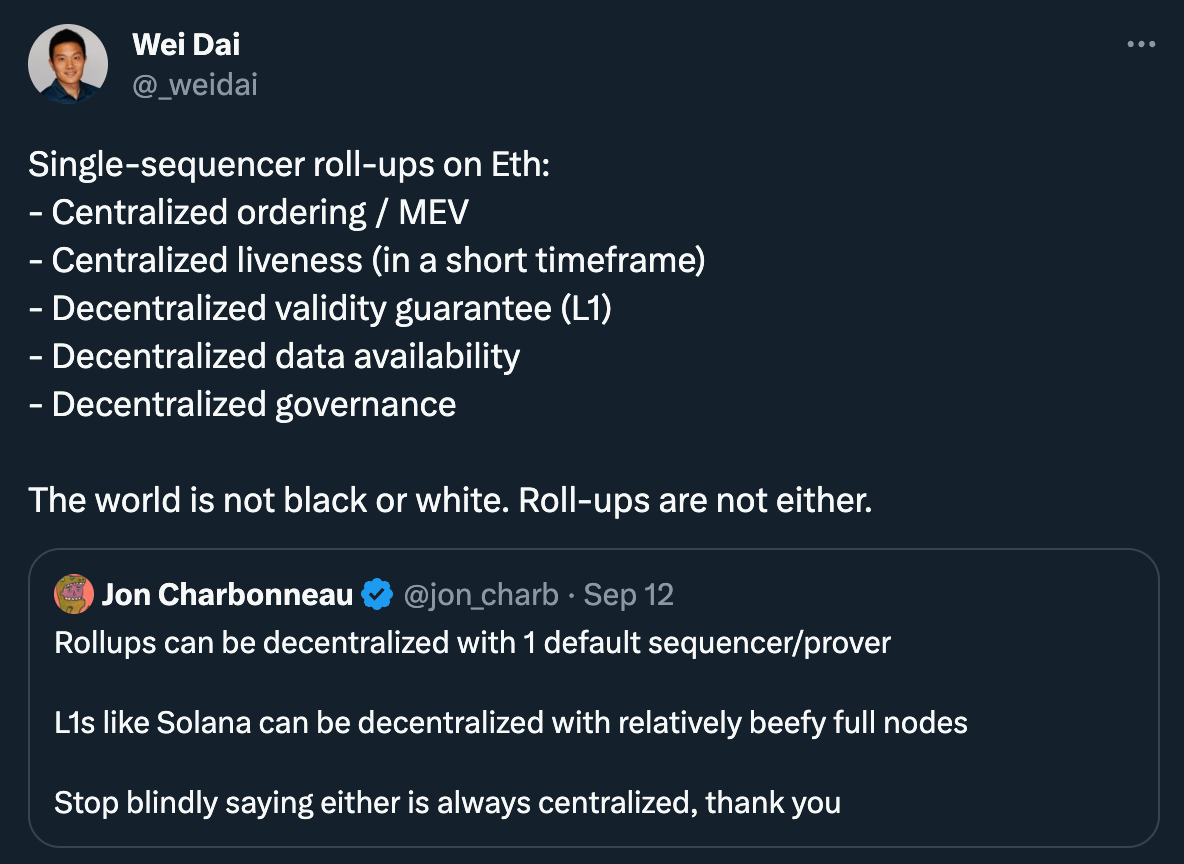Weekly Rollup #32
Astar ➡️ Ethereum | Introducing Synapse Chain & SIN | New 🕹️ chain joins Superchain | Can rollups be decentralized with one sequencer? | How many rollups will there be? | Week ending September 15th
👋 Welcome to Modular Media! We cover news, updates, educational content, and more within the modular blockchain ecosystem.
Subscribe to get posts sent directly to your email every week, and follow us on Twitter for modular-related updates!
This week’s issue covers:
Astar Joins Ethereum: Introducing Astar Supernova
Introducing Synapse Chain & SIN
Ancient 8 Chain: A New Gaming Network Joins Optimism’s Superchain
More News & Announcements
Can rollups be decentralized with one sequencer?
How many rollups will there be?
More Education & Discourse
📣 News & Announcements
Astar Joins Ethereum: Introducing Astar Supernova
Last week, Astar announced they will be launching their own zkEVM in order to expand their cross-chain capabilities, and become “a gateway to connect the Ethereum and Polkadot ecosystems”. This means one of the two biggest Polkadot chains is joining Ethereum and launching its own zkEVM, using Polygon’s CDK (rollup stack).
Polkadot’s low activity
It’s no secret now that Polkadot has fallen short of users compared to other chains, like Ethereum, L2s, Solana, etc. If we look at the top parachains by TVL, we can see it’s not too high right now. Below we can see the top 10 parachains by TVL:
btw, Astar went from a high of +$380M, to now around $29.12M.
Now, let’s compare this to the top apps on Polygon, which is where Astar’s zkEVM will be connected with:
We can see it’s not even close.
Sure, all chains have gone through a decline in activity this year (we’re in a bear market of course), however, we can see some chains fell a little harder than most. That said though, not only will this zkEVM launch help Astar expand its user base, but may potentially grow Ethereum’s own reach across Japan, considering Astar is the country’s most popular chain. “Astar serves as the gateway for projects across enterprise, entertainment, and gaming to enter Japan and beyond”.
An expansion to Ethereum may also lead to higher revenue for ASTR token holders, as revenue received from the sequencer will be used to buy and burn. Plus, ASTR is also used as “the gas token for (Astar) tooling” - and since Ethereum is much more active, there’s a chance fees earned from tooling will also increase.
While Astar says it will remain deployed on Polkadot still, it is interesting to see a top parachain move to its own rollup. In fact, some claim Ethereum’s rollup-centric roadmap copied Polkadot’s parachain design (Polkadot has the Relay chain with parachains, & Ethereum has the Beacon chain with rollups). Another interesting aspect is that this now makes two chains that transitioned over from Polkadot - the other was Manta Network, which we talked about in a previous newsletter.
Make sure to read the complete post to learn all about Astar Supernova.
Introducing Synapse Chain & SIN
Synapse Labs just announced the testnet launch of two new initiatives:
Synapse Interchain Network (SIN): can think of this as an optimistic communication protocol
Synapse Chain: “an optimistic rollup that serves as data publishing for the Interchain Network”.
Here’s a quick look at each of these.
Background
During Vitalik’s “endgame” post, he mentioned that there needed to be three things to scale Ethereum without compromising on security:
A decentralized settlement layer: Ethereum
low-cost rollups: Arbitrum, Optimism, Polygon, zkSync, Starknet, etc.
interchain communication network: this is what SIN is aiming to accomplish
Synapse Interchain Network
SIN is basically an optimistic bridge that sits between different L2s - looking at the image above, you can see how SIN sits in between each L2. This messaging protocol, however, uses fraud proofs. “As as long as there is at least one honest agent, fraudulent messages aren't executed”.
So, when a user sends a message from one chain to another, one of the SIN agents picks the message up and optimistically relays it to its destination. “Optimistically” means all messages between rollups are treated as valid from the get-go, but if one of the transactions appears as invalid, then anyone can submit a fraud proof to challenge the transaction and revert the block. & becoming one of these agents is permissionless, meaning anyone can stake their assets as collateral, and start verifying messages between chains for the earned fees that are received as incentives.
Chains that leverage SIN can customize the amount of time the challenge period ends (the window in which anyone can submit a fraud proof - could be the 7-day standard, or less). This is what they refer to as “modular security”. I would assume other security parameters are added over time, similar to what Hyperlane does for example (choose who your app can talk to, etc.).
Synapse Chain
“Synapse Chain is built on the Syn OP stack. Inspired by Optimism’s work on the OP stack, but modified with the Synapse Interchain Network to be a natively interchain rollup”.
Synapse Chain is the DA layer that will store all the message attestations. It basically holds the snapshots of messages that are sent through SIN, along with the signatures of network participants (“guards” & “notaries”). Because the snapshots that are posted on the chain provide the state of the different L2s connected to SIN, the Synapse Chain can be thought of as the coordination hub for SIN. The chain also is where users submit their fraud proofs to challenge a transaction (it’s the settlement hub for SIN).
Synapse Chain is secured by PoS - this economic security comes from the agents that want it participate in SIN for rewards. If you misbehave and approve an invalid message, you get slashed.
“The Synapse Interchain Network testnet is live with contracts deployed on Synapse chain testnet, Arbitrum Sepolia, and Ethereum Sepolia (more chains coming)”. You can learn all about SIN & the Synapse Chain by reading the full blog post.
Ancient 8 Chain: A New Gaming Network Joins Optimism’s Superchain
Ancient 8 just announced the testnet launch of Ancient8 Chain, a gaming-focused, OP Stack L2.
Introducing Ancient Chain
Ancient8 has “everything a studio needs to successfully develop, launch, and market games”. But if Ancient 8 wants to be a home for onchain games, then they’re going to need infrastructure that can keep up. Web3 games require high throughput, and if you want to do that while remaining on Ethereum, then you’ll have to do this on an L2. & not only will the latency be terrible with millions of players online at the same time(which is what every game is trying to achieve right?), but, users will have to pay for every action in the game. And so, it becomes a matter of which rollup stack to build this L2 with - there’s OP Stack, Arbitrum Orbit, etc.
Ancient8 went with the OP Stack. To build this L2, they leveraged Conduit’s RaaS solution, which btw, is quickly becoming an OP Stack favorite amongst teams. Not only will they get enhanced performance with an L2, but considering they’ll be joining Optimism’s Superchain (a mesh network of OP Stack L2s), Ancient8 will have seamless access to the liquidity and users available on different Superchain rollups, including Base and Zora.
Background
Ancient8 started as the biggest gaming guild in Vietnam, helping thousands of gamers gain access to the 100+ games Ancient 8 partnered with.
Ancient8 offered services typically found with gaming guilds, such as:
scholarships: lending gaming assets to the aspiring players
Education: learn the ins & outs of a game and the best strategies to use
Research: offered both public & exclusive in-depth research related to web3 gaming
e-sports: participated in global, and regional, events
Products
Apart from building a gaming community, Ancient8 also developed five products to help expand the infrastructure layer for game-fi:
Dojo Launchpad:
PlayNation:
EXO ID:
Space3:
Gosu Network:
Thoughts
If you recall, Immutable X has also launched their own gaming-focused L2 - so what’s the difference?
While Immutable has strong game IP, Ancient8 has a large community of genuine onchain gamers. Remember how big P2E games were in Vietnam?
Immutable is building a zk-rollup (zkEVM) using the Polygon stack, while Ancient8 is building an optimistic rollup using the OP Stack, and also joining Optimism’s Superchain.
As mentioned Ancient8 has one of the biggest onchain gaming communities in the world, and this would be a huge benefit to any new game wanting to deploy with instant access to players.
More News & Announcements
@anuragarjun, founder of Avail (DA layer), shared some stats to show just how far along Avail is in production already, including being one of the two projects with working DAS, having 23 partnered projects already, & more.
Manta Pacific, a zk-enabled EVM L2, just launched on mainnet, meaning anyone can start using any deployed ZK application. We talked more about Manta Pacific in a previous newsletter edition, here. Manta also launched the first stage of their ecosystem growth program, which features $10M in funding.
OP Stack chains can officially start using Espresso sequencer, after its latest testnet launch, Cortado. & more optimistic rollup news, as the team also announced their partnership with Offchain Labs to bring decentralized sequencing to Arbitrum. For those curious, here’s what the Espresso ecosystem looks like so far.
@droak_ built “cosmos-linux, a rollup built using Rollkit, and integrated with Celestia DA.”
Gelato Network just announced the launch of their own RaaS solution, centered around Polygon’s CDK (rollup stack) - zk-rollups in minutes.
BNB Chain just launched its L2 on mainnet (opBNB). We talked about opBNB in a previous issue if you’re interested.
Polygon officially published the first three proposals to start on their 2.0 journey. This involves the transition from $MATIC to $POL, as well as the launch of their staking layer. We talked more about this in a previous newsletter.
@0xfuturistic introduced “Sequencer Commitments for the OP Stack”.
You can now explore the zkSync ecosystem of dapps through DappRadar. Also, Safe announced their integration of zkSync Era.
Optimism held a Twitter Space with the two teams building a PoC proving system for the OP Stack, RISC Zero & O(1) Labs.
Fuel Labs launched a new doc portal for developers.
Aztec (Eth privacy-enabled L2) announced the launch of Aztec.nr, a “Aztec’s framework for smart contract privacy”. According to the post, it adds blockchain capabilities to Noir.
Find out why Caldera thinks they’re the best choice for MakerDAO’s new rollup.
Over 1K RollApps have been deployed on Dymension already.
AltLayer partners with Lemonade for NFT mints - “the Alter tribe can now mint NFTs or POAPs gaslessly via Lemonade”.
Users can now sign up to be amongst the first BTC stakers on Babylon
Users can now start completing tasks listed on Hyperlane’s bounty board, and be rewarded in USDC for doing so.
Here’s a dashboard to keep track of Connext governance, now that $NEXT has been distributed.
The Catalyst testnet is coming to a close on the 20th (tomorrow).
Native USDC officially hits the Cosmos ecosystem.
Layer Zero moves to Google Cloud Oracle, meaning Google Cloud “will verify the validity of every message within LayerZero by default”.
Metamask Snaps launches Open Beta. “MetaMask Snaps allows you to add features and functionality from independent developers to your MetaMask”. In other words, 🦊 goes modular. Check out the thread to learn all about Snaps, or, the bankless guys held a good podcast episode about it, here.
📚 Discourse & Education
Can rollups be decentralized with one sequencer?
Jon Charbonneau from DBA suggests that yes, rollups can be decentralized with one sequencer or prover. He also states that L1s can be decentralized even if they enforce high resource requirements to run nodes.
What do these two statements have in common? They are both in direct opposition of very frequent “centralization” criticism.
Here’s Jon and Wei Dai from 1kx making it very clear that rollup decentralization is multidimensional.
It’s hard to argue that either of the above illustrates an outright centralized system. It’s simply more complex than this.
If you are using a centralized sequencer, you are exposed to centralized ordering of transactions (the one sequencer decides any order they want and plays any MEV games they want) and centralized liveness (the one sequencer can censor you for a short period of time). That said, even with a centralized sequencer, you still get decentralized validity, data availability and governance because those functions are outsourced to the (hopefully decentralized like Ethereum) L1.
What’s the point of Jon’s take? To convey that nuance is important and poor criticism can have negative implications. Thankfully, we have resources like L2Beat which enables more nuanced evaluation and healthier criticism.
How many rollups will there be?
Steven Goldfeder from Offchain Labs proposes an interesting mental model for which apps might want their own rollups.
He frames the relationship between apps and rollups as similar to the relationship between TV shows and channels - “loosely organized by genres”.
Today people mostly talk about general-purpose vs. app-specific rollups, but this falls somewhere in the middle. It’s not too hard to envision, for example, 10 games on a kind-of-general-purpose “gaming rollup”. Let’s say the hypothetical gaming rollup is high performance and makes several gaming-specific VM optimizations. Let’s say the gaming-specific optimizations are all “good enough”. Each game might ideally add an extra optimization to benefit themselves, but they see more value in a shared state environment to tap into a user base with shared wallets, NFTs, etc.
So, if Steven’s analogy is spot on and the future unfolds this way, how many rollups will there be? Of course, no one knows, but here are a few interesting takes:
Two interesting things to note:
This extension of Steven’s analogy reminds us that technology paradigms often swing back and forth like a pendulum between bundling and unbundling.
We might see a million rollups that look much different than the rollups we are familiar with today - “private, short lived instances that effectively replace today's server environments”.
More Discourse & Education
Anoma deep dives into all things intents ✍️🔥
Namada explains how they leverage IBC to offer privacy to users across various chains ✍️
@mikeneuder and @dankrad explore "two-tiered" staking, a hypothetical native liquid staking token design ✍️🧠
@sunnedece updates her modular landscape graphic and further explores RaaS and interoperability 🖼️
@kay_phillips_ updates her market map of Rollup SDK & RaaS players 🖼️
Paradigm releases recordings from the Rust x Ethereum day 🎥
@vasa_develop deep dives into the Ethereum Attestation Service (EAS) 💬🔥
@camiinthisthang explores how ZK coprocessors might be the missing piece for building rich experiences akin to web2 ✍️
@bridge__harris explores intents and how they address the UX problem across a variety of applications ✍️💎
Astria deep dives into why sequencers should be decentralized ✍️
The Rollup discusses building killer dApps on L2s with Mode and Lifi teams 🎙️
Fluent walks through popular rollup designs in simple terms ✍️
@pepyakin explores State Commitments Arguments, a useful concept for reasoning about rollups, sharding, light clients and bridges ✍️💎
@barnabemonnot curates a Blockspace Expo reading list in preperation for Protocol Berg ✍️
Clave deep dives into the history and future of Account Abstraction ✍️
@0xkatz explains the dapp noisy neighbor problem for monolithic chains ✍️
@0xallyzach explains why Farcaster is seeing all time high usage 💬
@gogoDiegocrypto explains the levels of security for DA layers 🖼️💎
@DarshanG_ explains Ingonyama and how they are building hardware accelerators for zero-knowledge cryptography 💬
@interchainriley explains how to turn staked ATOM into liquid staked ATOM with Stride 💬
@barretodavid walks through deploying and using a custom account contract on Starknet using Starkli ✍️
That's all for this week! Thanks for reading 🧱🎬





